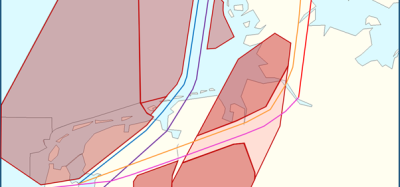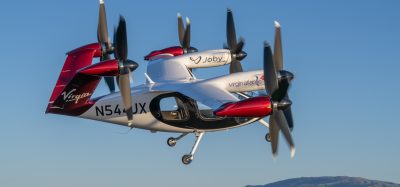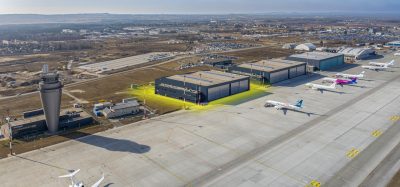Change and challenge in European Air Traffic Management
- Like
- Digg
- Del
- Tumblr
- VKontakte
- Buffer
- Love This
- Odnoklassniki
- Meneame
- Blogger
- Amazon
- Yahoo Mail
- Gmail
- AOL
- Newsvine
- HackerNews
- Evernote
- MySpace
- Mail.ru
- Viadeo
- Line
- Comments
- Yummly
- SMS
- Viber
- Telegram
- Subscribe
- Skype
- Facebook Messenger
- Kakao
- LiveJournal
- Yammer
- Edgar
- Fintel
- Mix
- Instapaper
- Copy Link
Posted: 30 May 2008 | David McMillan, Director General, EUROCONTROL | No comments yet
It might be a truism, but change is gradually changing. This can be seen in the accelerating rate that new inventions are adopted wide-scale. The World Bank recently conducted a study into this and found that in the past, it took a long time before new technology was adopted.
It might be a truism, but change is gradually changing. This can be seen in the accelerating rate that new inventions are adopted wide-scale. The World Bank recently conducted a study into this and found that in the past, it took a long time before new technology was adopted.
It took 120 years for trains and open-hearth steel furnaces to be widely used; even the telephone took over a century to really catch on. Aviation and radio, invented in the early 20th century, were accepted a degree faster in some 60 years, but the rate of acceptance of new technology is growing rapidly. In 20 years, personal computers and CAT scans were embraced and mobile phones took only 16 years to achieve more than 80% of country coverage.
Change and new technology feature strongly in the field of Air Traffic Management; here in Europe, we find ourselves on the brink of a new era. The SESAR programme (Single European Sky ATM Research Programme) will see the development and implementation of radically new equipment, approaches and procedures.
It is not, however, change just for change’s sake. ATM is in thorough need of an overhaul. Procedures have not evolved greatly since the Second World War and the equipment we use today will not continue to cope with future air traffic. The system as a whole is already under strain.
In 2015, we can expect some 13 million flights in Europe. A busy day then will be 44,000 flights, compared with around 30,000 today. In seven years’ time, our current ‘busiest days’ will be surpassed practically every day.
The challenge of this growth will not only be about handling traffic in the air. Seven years from now, Europe will have to accommodate 30% more flights and yet there is already saturation at our major hub airports.
Traffic must continue to be handled safely in the air and on the ground, with minimum delay and maximum efficiency.
There is only one way to cope with these volumes of traffic and that is with the Single European Sky and SESAR.
SESAR
The Single European Sky ATM Research Programme is the technical complement to the European Commission’s Single European Sky package of regulations aimed at eliminating borders in the sky. It is an ambitious initiative, having brought together a disparate set of aviation players (civil and military, legislators, operators, industry and users) to improve, innovate and transform the current system. SESAR aims at making Europe’s ATM system an efficient network; re-engineered, more effective, safer, more cost-efficient and environmentally sustainable.
The SESAR programme began with an analysis of the current framework; performance targets and a performance concept were then set. A deployment sequence has now been drawn up, one that outlines the changes that need to be made in the progressive transition from today’s system to the target concept. In the spring of 2008, an ‘ATM Master Plan’ is due to be unveiled.
The ‘ATM Target Concept’ has been defined and a number of Implementation Packages described.
The first Implementation Package (IP 1) runs from 2008 – 2013. It is called ‘Creating the Foundations’ and builds on current projects which contribute to capacity improvements. Its objective is to implement short-term initiatives and to disseminate best practices that will ensure that latent network capacity can be unlocked and additional capacity generated. It also looks at expanding information-sharing, enabling more environmentally sustainable performance-based operations, and increasing Airports/Terminal and En-route Operations efficiency and capacity gains.
IP 2 implementation will run from 2013 – 2020. It is called ‘Accelerating ATM to Implement the 2020 ATM Concept’ and outlines those activities needed to achieve the 2020 goals. It will focus on enhancing network cost-effectiveness and efficiency through improving the Trajectory Management process, providing a wider and more dynamic information-sharing environment. It will deliver more precise aircraft-based meteorological data and expand Airports/Terminal Area Operations and En Route capacity benefits through the introduction of more advanced automated tools. It will support operational flexibility for both civil and military users, through faster responses to military airspace requirements.
IP3 is for post-2020; ‘Achieving the SESAR goals in the long-term’. It targets the activities needed for the further enhancement of the ATM System. It will ensure that the long-term goals of SESAR will be met. Its main characteristics will be the introduction of the most advanced features of the SESAR Concept of Operations, such as the full application of Airborne Separation Assistance System (ASAS) self-separation and the 4D Trajectory Contract.
EUROCONTROL is responsible for the first Implementation Package. The other two will be managed by the SESAR Joint Undertaking (SJU). EUROCONTROL will contribute €700m for the duration of the SJU, a contribution which will be mainly in kind.
Performance
SESAR will provide us with the technical and procedural means for dealing with future air traffic, but there is an underlying issue which needs addressing first. The terrain must be prepared so that the new technologies and methods can work, as they are designed to do, with maximum effect. That issue is the performance of the European ATM system.
Europe is trying to improve its overall performance in ATM, recognising that there are shortcomings that should be redressed. The United States has similar amounts of traffic and airspace volumes and yet it manages both more efficiently than is the case in this continent (although it must be admitted that traffic flows are rather more complex here).
This being the case, Europe took an unprecedented step last November in committing to a performance-driven system. Performance targets for safety, capacity, delays and cost-efficiency were set and agreed to.
Four key targets were defined: a minimum level of 70% safety maturity for all air traffic control service providers and State regulators by the end of 2008; a performance target for en-route air traffic flow management delays of one minute per flight over the next five years; a reduction of the unnecessary distance flown by each aircraft of 2km/year, equivalent to removing 24,000 flights from the European system; and a cost-effectiveness target that will see the real unit cost per kilometre being reduced by 3% a year for the next five years.
EUROCONTROL as an Organisation is committed to working to achieve these targets, together with its stakeholders. It is reviewing its internal processes to ensure that it is fit for this purpose.
EUROCONTROL had already begun to put such changes in place, but was encouraged to go further by the High Level Group, as underlined in their Report1: “Empower EUROCONTROL to play a key role in delivering the Single European Sky and SESAR objectives within the strategic and regulatory framework set by the European Union. Focus its activities on excellent pan-European functions and ATM network design and support to regulation as requested by the European Commission and Member States.”
EUROCONTROL is also helping to drive performance-setting on an international level in the context of ICAO, the International Civil Aviation Organisation.
Performance and performance monitoring are vital ingredients to SESAR’s success. It would do little good to introduce new technology and methodologies if they cannot be used to best effect, because of disappointing performance.
EUROCONTROL’s Performance Review Commission is deeply engaged in monitoring the system’s performance and makes recommendations for its improvement. Its work is being expanded and will be pivotal in preparing the ground for future development.
Airports
There are indications that the biggest capacity crunch is going to be at Europe’s airports.
EUROCONTROL’s ‘Challenges to Growth’ study shows that by 2025, more than 60 of our airports could be congested, with the top 20 airports congested from eight to ten hours a day. EUROCONTROL is working on a revised version of the study and is expecting some results in the summer of 2008.
In the interim, our first step in addressing the airports’ problem has been to work with them, on a case-by-case basis, to identify clearly what latent capacity exists in the system and to maximise that.
A second step is to apply technical and operational means, to make better use of the resources available and to ensure that we reduce the impact of aviation on the environment.
Programmes such as Advanced Surface Movement Guidance and Control System (A-SMGCS) and airport Collaborative Decision-Making (CDM) can substantially increase the number of aircraft that can be handled by individual airports.
Continuous descent approach is another programme with tremendous benefits, up to 30% reduction in fuel burn and 30% reduction in noise around the airport.
Finally, in those areas where technical and operational methods do not deliver the policy outcomes sought, we may need to apply market measures. There are a range of techniques at our disposal including incentives for operating in low/peak hours; new slot allocation methods, or even multimodal transport models.
These options are being examined with the European Commission, in the context of our Cooperative Network Design Strategy.
More traffic = delays?
There is a risk that more traffic will lead inexorably to more delays; unless technology, improved methodology or better coordination can prevent it.
EUROCONTROL’s Performance Review Commission (PRC) has been examining the delay issue carefully for ten years now and is amassing a sizeable bank of knowledge on the subject.
In their latest report on the performance of the European ATM in the year 2007, they try to explore some of the underlying causes of delays. This is a considerable task and, in this report, they indicate their willingness to undertake a new study to better understand and measure the factors that influence it.
For instance, they demonstrate that the air transport network is sensitive to primary delays and that this sensitivity was increased in 2007, probably because the strong traffic growth made the system more vulnerable to perturbations.
Air transport delays, they observe, originate principally from local turnaround delays, that is, from ground pressures under local control outside the remit of ATM. This must be an area of particular concern for airports and is one that has been flagged for improvement.
The picture is by no means all gloom. The PRC reports that Collaborative Decision Making (CDM) projects have significant potential to improve punctuality generally and to reduce detrimental effects, especially in cases of reduced capacity.
As for airport delays, the issue is less clear-cut. These, the PRC points out, are complex to evaluate and deserve further study. The PRC lists some fundamental causes: airport scheduling, flow management issues, aerodrome and ATC capacity and weather, but they concede that this list is not exclusive; more work must be done in this field.
They make a call for a coordinated approach overall; underlining the fact that ‘it is not possible to optimise ATM in isolation.’
Airlines, airports, ATC, ATFM, and airport coordinators need to move away from “insular perspectives”, as the PRC terms it, to a more general focus on transport performance. In order to provide more back-up for this, they have launched a pilot project to measure the influences bearing on this matter.
Moving ahead
The implementation of SESAR will begin in 2013. We have to be ready for this baseline, as it is known. Each player in ATM has a specific role to play in order to make sure that when the curtain goes up, the show can go on.
Every stakeholder is important, and each one has to be genuinely committed. This will often have to take the form of serious investment in time and resources to be certain that when implementation begins, every single preparatory action has been taken. States, Air Navigation Service Providers, airspace users, airports, regulators, everyone must be ready for 2013; everyone must be fully engaged.
If our stakeholders are the actors in this show and the European Commission the Director of the performance, then EUROCONTROL is the Producer, taking on the coordinating, supporting role. SESAR Joint Undertaking is the playwright, conducting research and development with validation, but not the implementation.
Indeed, the real work of SESAR comes with implementation and this will be done by the main actors, the stakeholders in Europe’s ATM network.
All EUROCONTROL’s efforts are being dedicated to reaching the common goal: successful implementation of SESAR from 2013 onwards.
However, our coordination activities do not begin and end in Europe. Europe’s near neighbours must benefit from the advantages a Single Sky will bring. As aviation is global, we have to ensure that our technical and operational developments dovetail properly with those in the rest of the world, and we are working closely with the United States to make sure that NextGen and SESAR are compatible.
The challenges facing us as we absorb these new changes into European ATM are complex. EUROCONTROL’s expertise, willingness and determination to succeed are available to help with this task. I am sure that the other participants will play their part and we can make the necessary changes so as to meet the challenges that face us all.
Reference
- Report of the High Level Group for the future European Aviation Regulatory Framework: “European Aviation: A framework for driving performance improvement”, July 2007
About David McMillan
David McMillan has been involved with transport issues at national and international level for over twenty years. He became Director General of EUROCONTROL, the European Organisation for the Safety of Air Navigation, on 1 January 2008.
Prior to joining EUROCONTROL, David McMillan held a range of posts in the UK’s Department of Transport (DfT). Between 2004 and 2007, he was the UK’s Director General of Civil Aviation. In this role he was responsible for domestic and international aviation policy issues including development of the Single European Sky, the relationship between aviation policy and environment, aviation competition, liberalisation, and air traffic control.


















